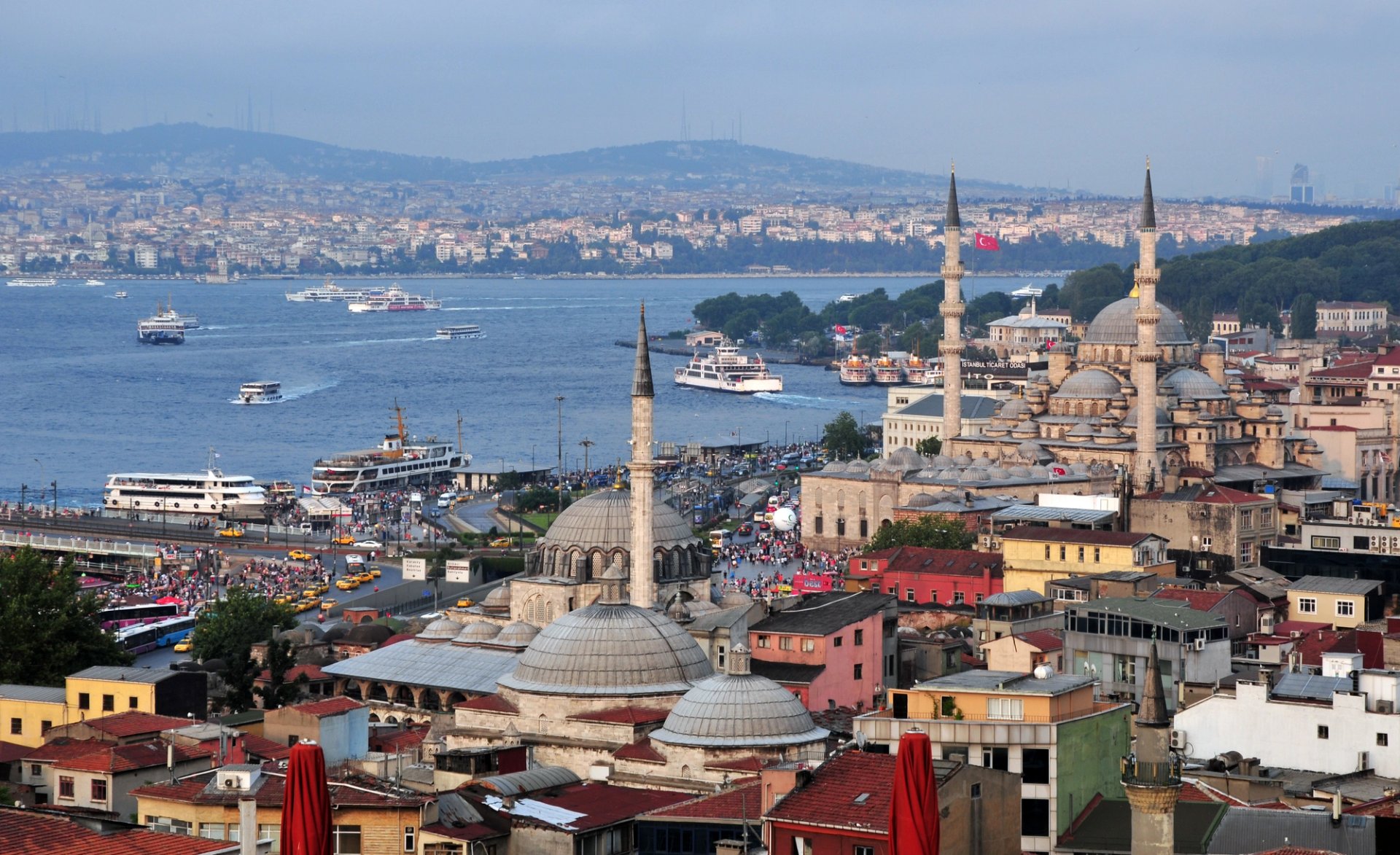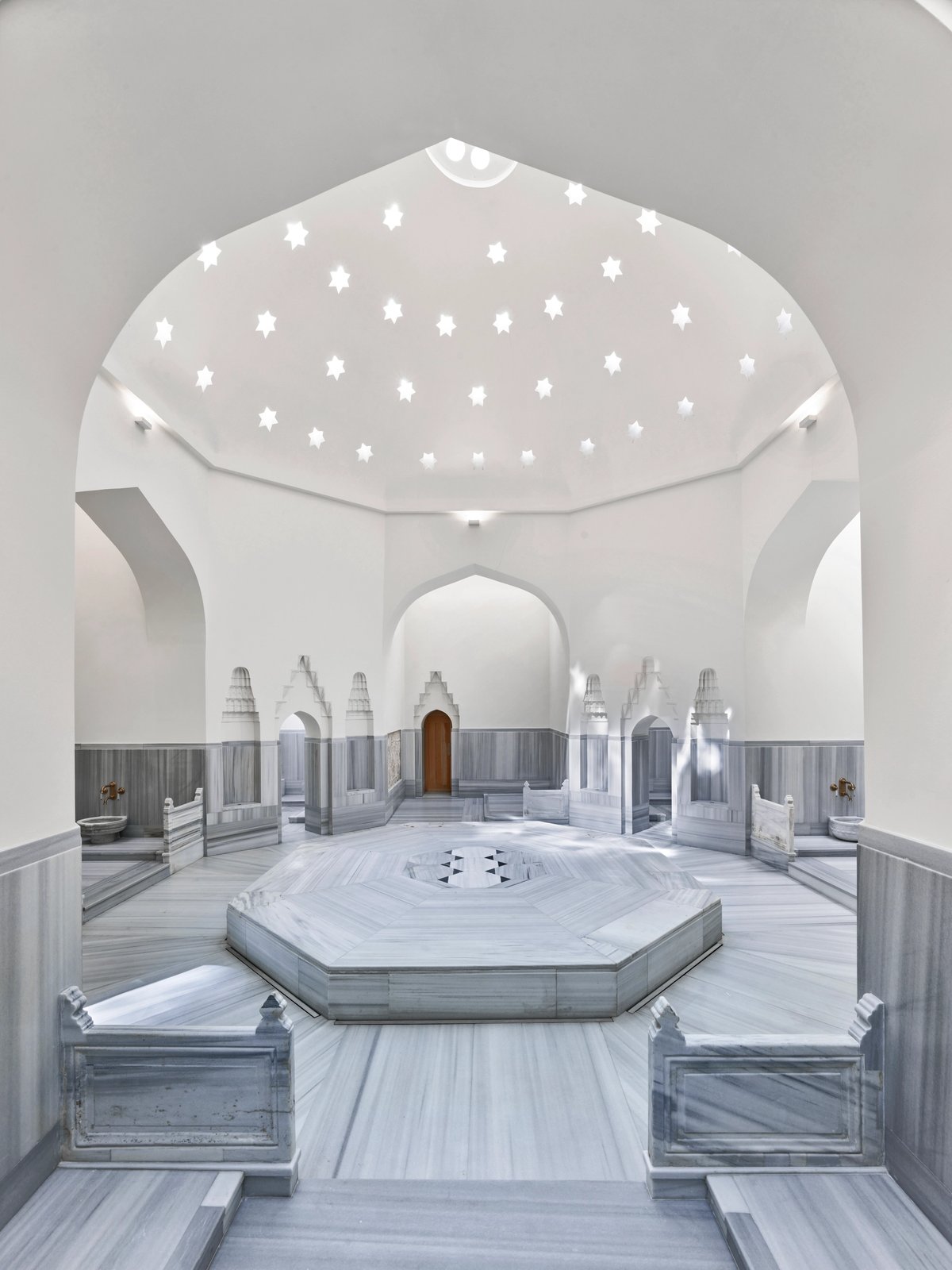Cross Istanbul’s Galata Köprüsü—the bridge over the Golden Horn, connecting the districts of Karaköy and Fatih—and one will find the Yeni Cami Mosque. Here, one reaches a well-trodden crossroads.
To the left, up the hill, lies the district of Eminönü, and the carpets, fabrics, ceramics and hawkers of the Grande Bazaar. There are also the endless stalls of tea, spices and candied fruit of the Mısır Çarşısı (Egyptian Bazaar), the sheer scale of the Sultanahmet Camii (Blue Mosque) and the Hagia Sophia. Most travellers take this route, thronging through Eminönü, where queues snake endlessly for access to some of the world’s most iconic places of worship.

A view of the Eminönü district of Istanbul
Photo: sinandogan
But, to the right of Galata Köprüsü, a different Istanbul suddenly appears; a warren of narrow roads through which mopeds speed, the city’s famous cats prowl—looking for scraps—and old men in traditional robes sip sweet apple tea in tiny cafes. Butchers keep flies at bay from huge sides of meat. Fishmongers stand over their glistening catch, caught that morning from out in the Marmara Sea. Wares are sold from rugs spread on the pavement.
This is the Zeyrek district. A bit more dog-eared, a bit less welcoming, and far less popular with tourists, but don’t be fooled: Istanbul’s unique history lies, resplendently, here, its ancient history evident. Zeyrek is on Unesco’s World Heritage List, and the influence of the city’s Roman, Byzantine and Ottoman eras is made clear through its architecture. Unesco’s World Heritage Conservation group writes that, for example: “The vernacular housing around major religious monuments in the Süleymaniye and Zeyrek quarters provide exceptional evidence of the late Ottoman urban pattern.”
Soon, outsiders may begin to navigate their way through Zeyrek with increased frequency. For on 30 September, the Zeyrek Çinili Hamam, a Turkish bath dating back to the 16th century and Ottoman rule, is reopening to the public, with traditional bathing available from March 2024.
Returning the Zeyrek Çinili Hamam to its original function has taken 13 years, and the process has been part restoration, part archeological excavation. The building, prior to that, was derelict and abandoned, with its former owner, it seems, oblivious to its history.
In 2010, it was acquired by its founding director Koza Gureli Yazgan, part of Istanbul’s Mamara Group. “It was nothing,” Gureli Yazgan says of its state at the time. “The plaster was covered with green mould, there was all this humidity dripping down the walls, but we started digging, digging.”
In doing so they unearthed a rich and long history. “When we bought it, we didn’t know any of the stories behind it,” says Gureli Yazgan in an interview with The Art Newspaper. “When we started the excavation, we just kept finding more and more artefacts, from Ottoman, Byzantine, Roman times, often not even related to a hammam [an alternative spelling for Turkish bath].”
The hamman was commissioned by Barbaros Hayreddin Pasha, the grand admiral of the Ottoman navy better known as “Barbarossa”. It was built in the 1530s, by the Ottoman’s chief architect Mimar Sinan, at the height of the Ottoman Empire.
Cutting through the sodden plaster, Gureli Yazgan’s team found, inches back, fragments of 3,000 luminescent turquoise blue ceramic tiles.

The hammam's men's hot room
© Ibrahim Ozbunar, courtesy Zeyrek Çinili Hamam
Çinili translates to “tiled bath house”—“Before we found the tiles, we didn't know why it was called this,” Gureli Yazgan says.
The hammam, it has been discovered since, is one of the earliest examples of a public space adorned with such an elaborate tiled design. During the Ottoman Empire, one would only find this intricate craftsmanship in the city’s few royal palaces, the preserve of the ruling elite.
Conservation work has involved uncovering and restoring the tiles, which now gleam under shafts of sunlight that slant through the crescent-shaped sky lights in the hammam’s domed roof. New research has revealed that more than 10,000 tiles with 37 unique designs once adorned the building's inside walls before a Parisian art dealer called Ludovic Lupti acquired the tiles and sold them to institutions and private collectors around Europe. Today, his name appears in the ledgers of the Victoria & Albert Museum in London, where some of the tiles are now held; tiles originally taken from the hammam can also be seen in the collections of the Louvre in Paris and the British Museum in London.
The restoration of Çinili has also uncovered more original architectural features, including wall paintings dating back to the 18th and 19th century, which were also found under layers of plaster.
“The paintings were made so the walls weren’t empty after all the tiles had been removed,” Gureli Yazgan says. “We found them under four layers of plaster, each from different times.”
In the bowels of the building is a newly constructed museum. Visitors can also explore Byzantine cisterns which connect to the hammam via a huge network of waterways that lie below the city of Istanbul. Ghostly carvings of boats have been discovered on the walls, possibly created, Gureli Yazgan surmises, by slaves brought to work on the cisterns by boat.
Recently, meanwhile, the hammam has been a space for encountering the work of living artists. During the Istanbul Biennial in 2022, Gureli Yazgan hosted a one-off exhibition throughout the baths, with works by artists Taloi Havini and Renato Leotta installed at its centre.
An exhibition titled Healing Ruins, featuring the work of 22 artists and curated by the Turkish curator Anlam Arslanoğlu De Coster, a former curator at Istanbul Modern, opens on 30 September (until 5 November 2023). Going forward, a rotating programme of installations will be hosted in the cisterns below.
“The show is all about the discovered layers of this place,” Gureli Yazgan says. “No-one knew it was there, and now it will be a contemporary space.”





